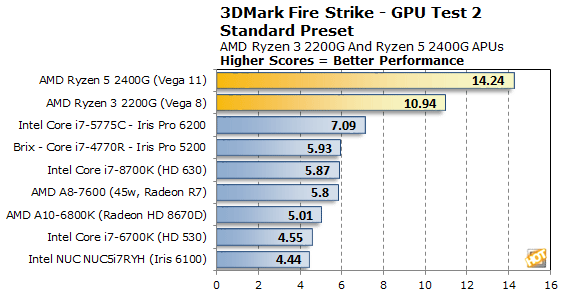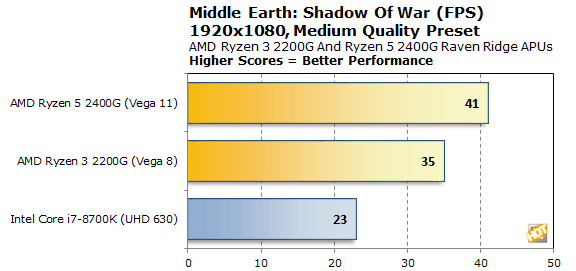AMD Ryzen 5 2400G And Ryzen 3 2200G Review: Raven Ridge Desktop Debuts
For our next series of tests with Coffee Lake, we moved on to some game-related metrics with 3DMark, specifically the physics benchmark that's part of the Fire Strike test, along with a couple of actual games. For the 3DMark Physics test, we simply create a custom 3DMark run consisting solely of the physics test, which is CPU dependent, and report the results...
|
|
|

|
We also ran some game and graphics tests on the Ryzen 5 2400G and Ryzen 3 2200G using 3DMark, Cinebench, and Middle Earth - Shadow Of War to see what their integrated Vega 11 and Vega 8 GPUs could do. We used 3DMark Fire Strike and Cinebench's OpenGL test with their default presets, and Shadow Of War was run at 1080P with the medium quality graphics setting.






In an actual game, however, the Ryzen 5 2400G with Vega 11 and Ryzen 3 2200G with Vega 8 jump well out in front of Intel's UHD 630, even with a Core i7-8700K backing it up. Vega 11 is approximately 79% faster here, while Vega 8 is about 52% faster.






